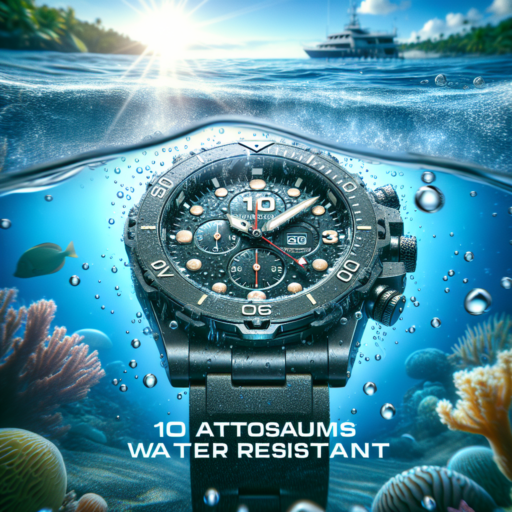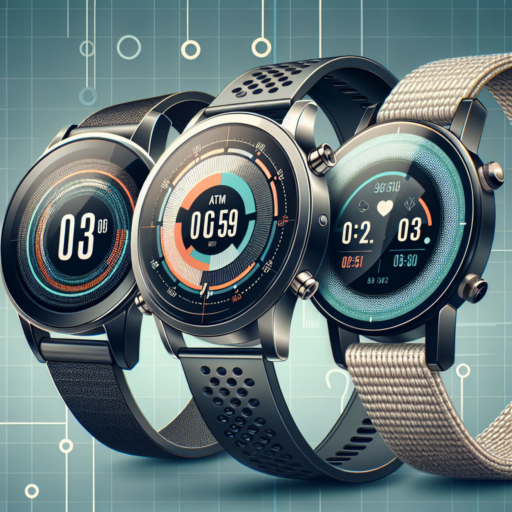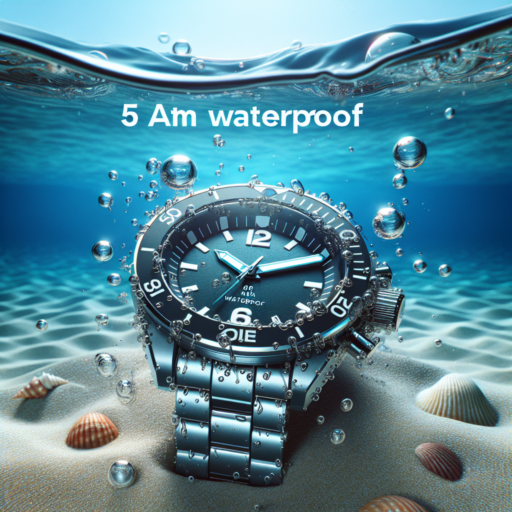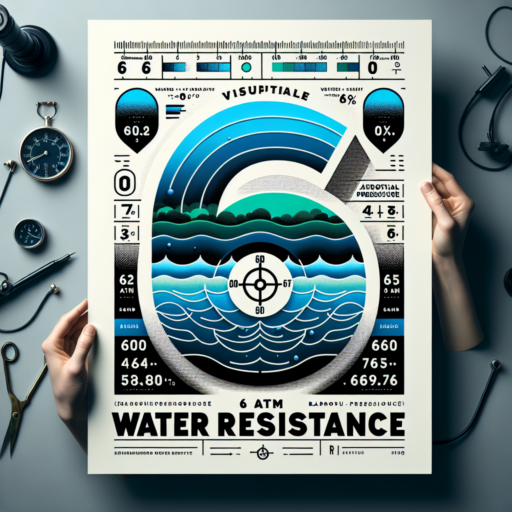No se han encontrado productos.
What does 10atm water resistant mean?
When discussing watches, the term «10atm water resistant» is a crucial specification that catches the eyes of those who lead an active lifestyle or are simply concerned about the durability of their timepieces when exposed to water. This specification indicates that a watch can withstand pressures equivalent to a depth of 100 meters (or approximately 330 feet) under water. While this might suggest that these watches are suitable for various water activities, it’s essential to understand the nuances behind this rating.
Understanding ATM in Water Resistance
ATM, short for «atmospheres,» is a unit of pressure used to rate the water resistance of watches. A rating of 10atm doesn’t directly translate to diving depths but rather the pressure a watch can withstand without allowing water to penetrate its casing. This is an important distinction because wearing a watch that’s rated for 10atm during deep-sea diving activities could potentially cause damage, despite the seemingly high resistance level.
Activities Suited for 10ATM Water Resistance
- Swimming in a pool
- Casual snorkeling
- Showering
- Other surface water sports
It’s pertinent to note that while a 10atm rating offers a good degree of protection against water ingress, it is not an invitation to push these watches to the brink in deep or high-pressure water environments. Manufacturers often advise against manipulating the watch’s buttons or crown while it is submerged, even at shallow depths, as this could compromise the watch’s water resistance capability.
In essence, the «10atm water resistant» specification assures a certain level of durability and protection for everyday water-related activities. However, it’s essential for watch owners to understand the limitations of this rating to maintain their watch’s integrity over time.
Can I swim with a 10atm watch?
Understanding the water resistance ratings of watches is crucial for ensuring their longevity and functionality, especially when it comes to water activities. A watch marked with a 10atm rating is often considered by many to be suitable for swimming, but it’s important to understand the specifics behind this rating. The designation «10atm» stands for 10 atmospheres, which theoretically means that the watch can withstand pressures equivalent to those found at a depth of 100 meters underwater.
When considering whether you can swim with a 10atm watch, it’s essential to take into account the type of swimming you’re planning to do. Light swimming, such as casual swimming in a pool, is generally considered safe with a 10atm rated watch. However, for activities that involve high-velocity water or deeper submersion, caution should be taken. The reason is that the rating, while suggesting a certain depth resistance, does not account for the additional pressure exerted by movements such as diving or high-speed swimming.
Moreover, it’s also crucial to consider the condition and age of the watch. Over time, the water resistance of a watch can diminish due to wear and tear on its seals and gaskets. Therefore, even if a watch is rated at 10atm, regular maintenance checks are advisable to ensure its seals remain intact and functional. This is especially important if you routinely expose your watch to water, as even minor degradation can compromise its water resistance.
Can I surf with a 10 ATM watch?
When considering the suitability of a watch for surfing, the water resistance rating, denoted as 10 ATM (Atmospheres), is a crucial factor. This rating implies that the watch is theoretically water-resistant up to 100 meters (330 feet) under water. For surfers, this depth far exceeds the typical conditions encountered while catching waves, suggesting a positive initial assessment.
However, there are important considerations beyond just water resistance depth. Surfing introduces dynamic pressures, such as when wiping out or when the watch is subjected to the force of crashing waves, that can exceed the static pressure at 100 meters depth. It’s necessary to understand that the 10 ATM rating primarily indicates the watch can withstand pressures equivalent to a 100-meter depth without water ingress, not necessarily the dynamic impacts associated with surfing.
Moreover, other environmental factors such as salt water, sand, and constant sun exposure can affect the watch’s durability and functionality over time. The corrosion resistance of the watch materials and the integrity of its seals under such conditions are critical to consider. While many watches designed for water sports are engineered to handle these elements, ensuring your 10 ATM watch is specifically built for or at least suitable for surfing activities is essential.
What is 10m waterproof?
Understanding the meaning of 10m waterproof is crucial when selecting gadgets, watches, or any device designed for activities that involve water exposure. The term 10m waterproof refers to the device’s ability to withstand water ingress at a depth of up to 10 meters without suffering damage. It’s an important specification for users who engage in swimming, snorkeling, or other water-related activities.
Devices labeled as 10m waterproof are tested under controlled conditions to ensure they meet the industry standards for water resistance. These standards involve not only the depth but also the duration and the water type (fresh or saltwater) the device can be exposed to. However, it’s essential to note that water resistance is not a permanent condition and can diminish over time due to wear and tear.
When considering a 10m waterproof device, it’s also important to understand the limitations. For instance, water pressure increases with depth, and activities that involve fast movements, such as diving or high-speed water sports, can exceed the pressure limits of a 10-meter water-resistant rating. Therefore, while a 10m waterproof rating offers a good level of protection against water ingress, it doesn’t guarantee the device will be impervious to all types of water exposure.




